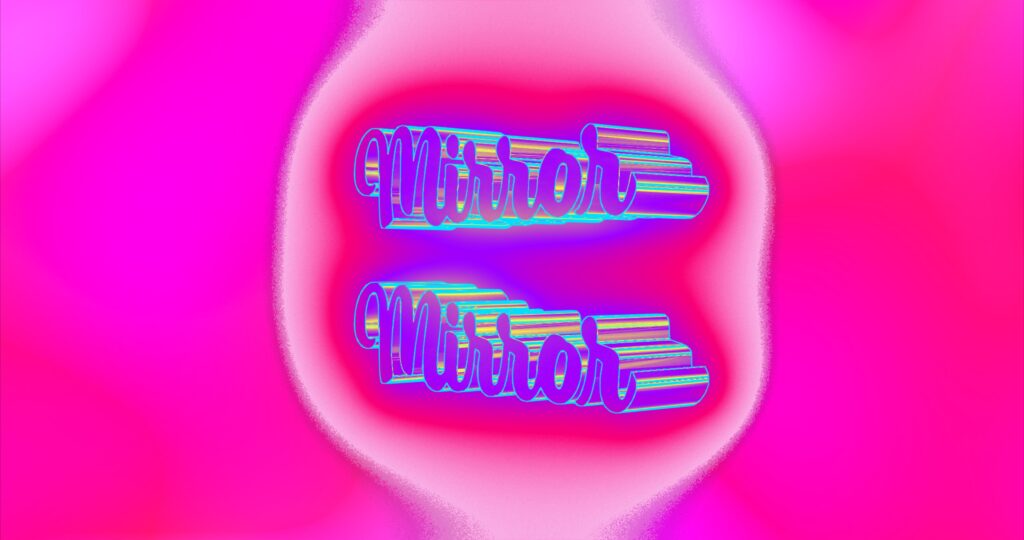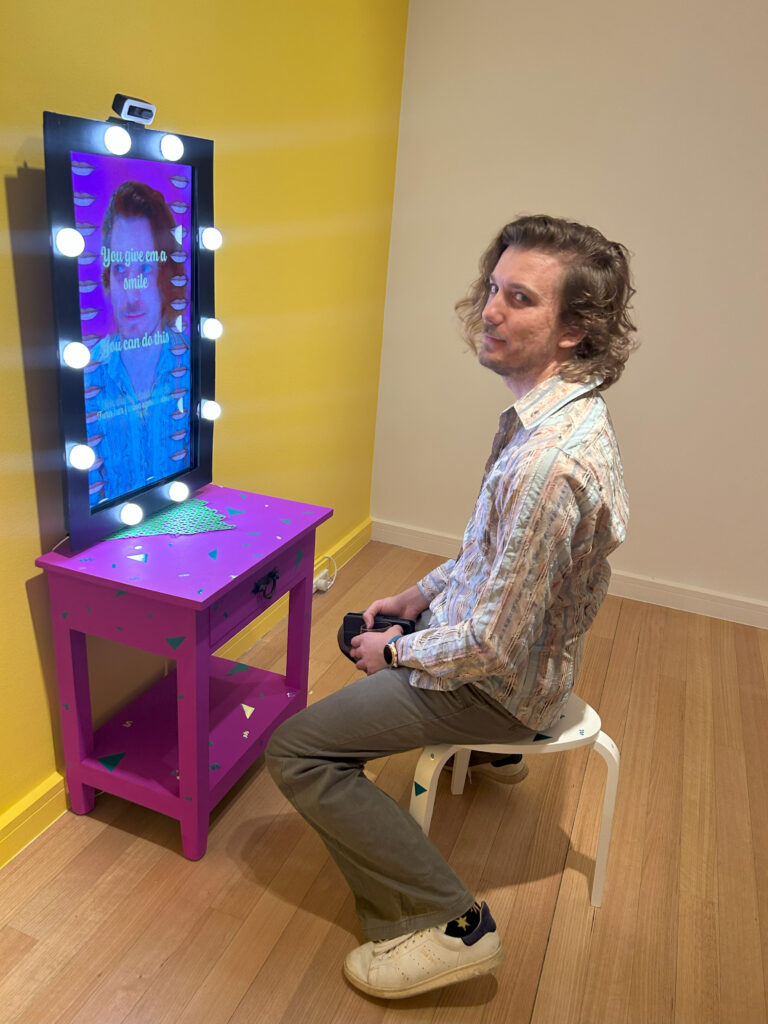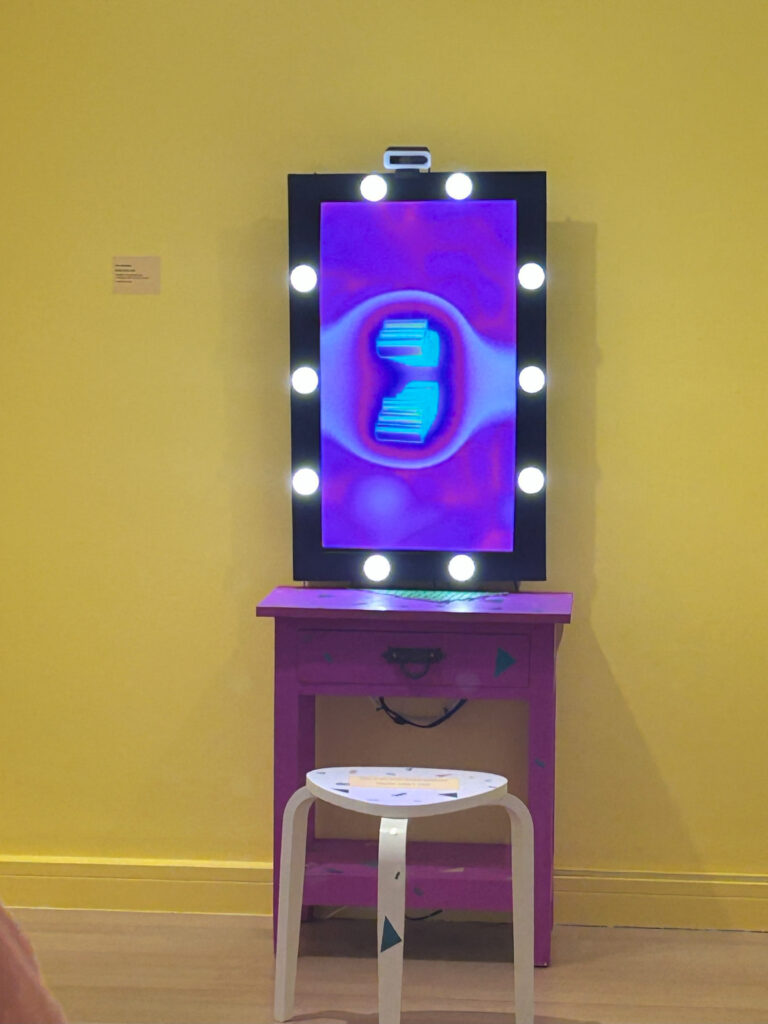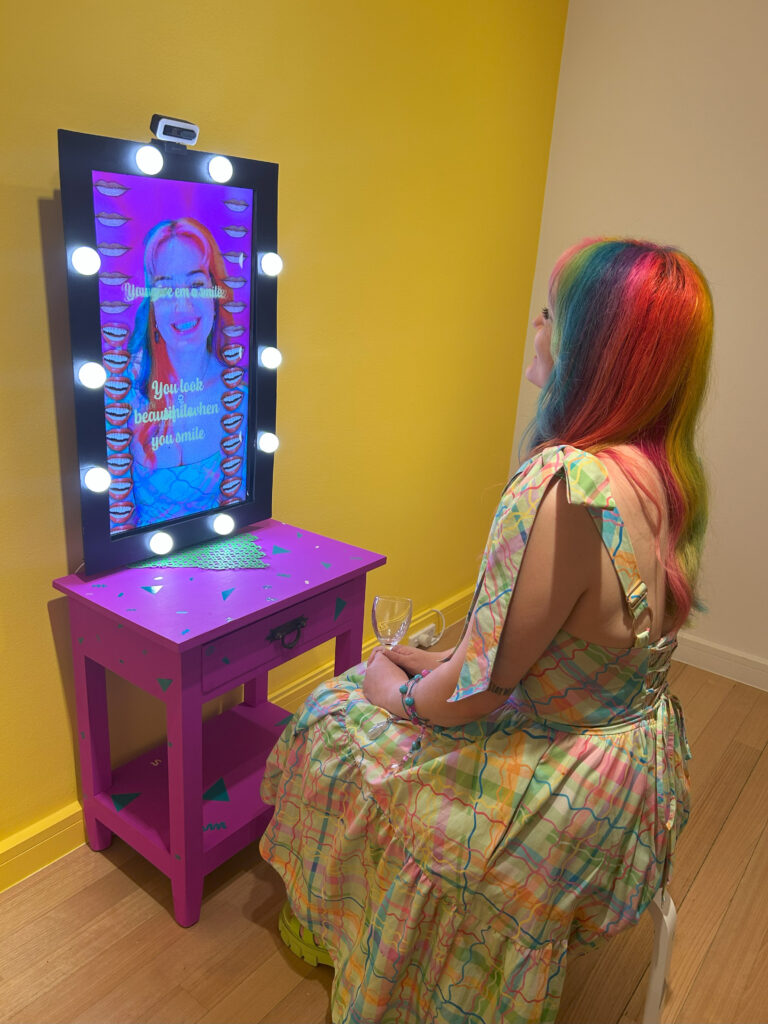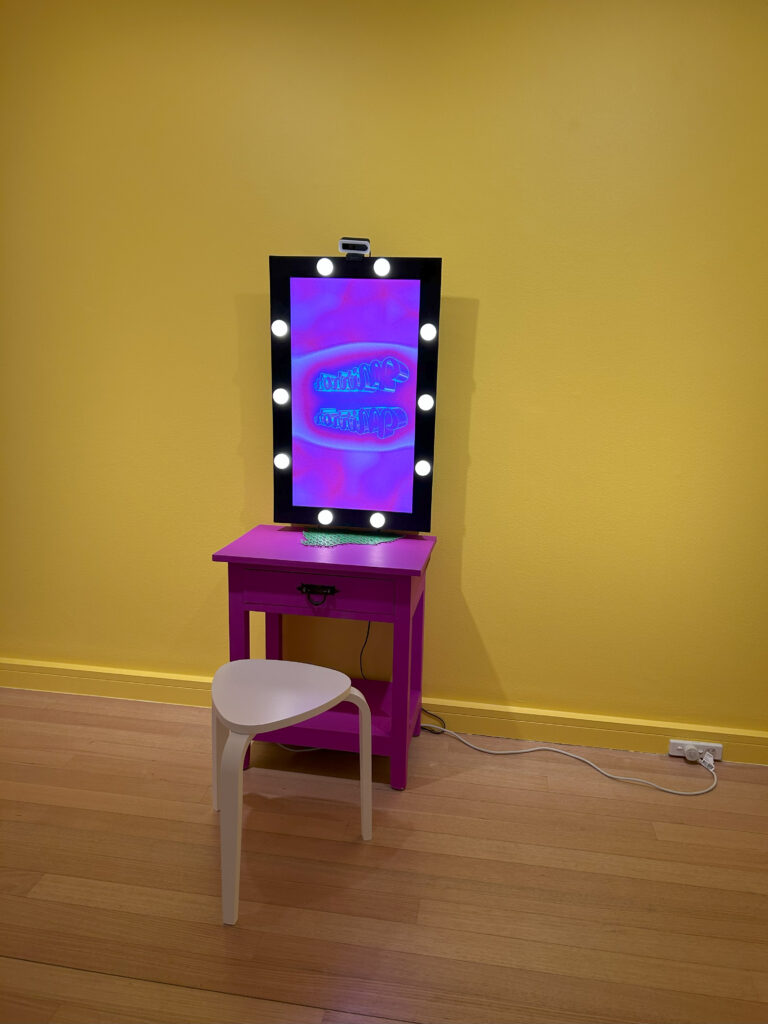
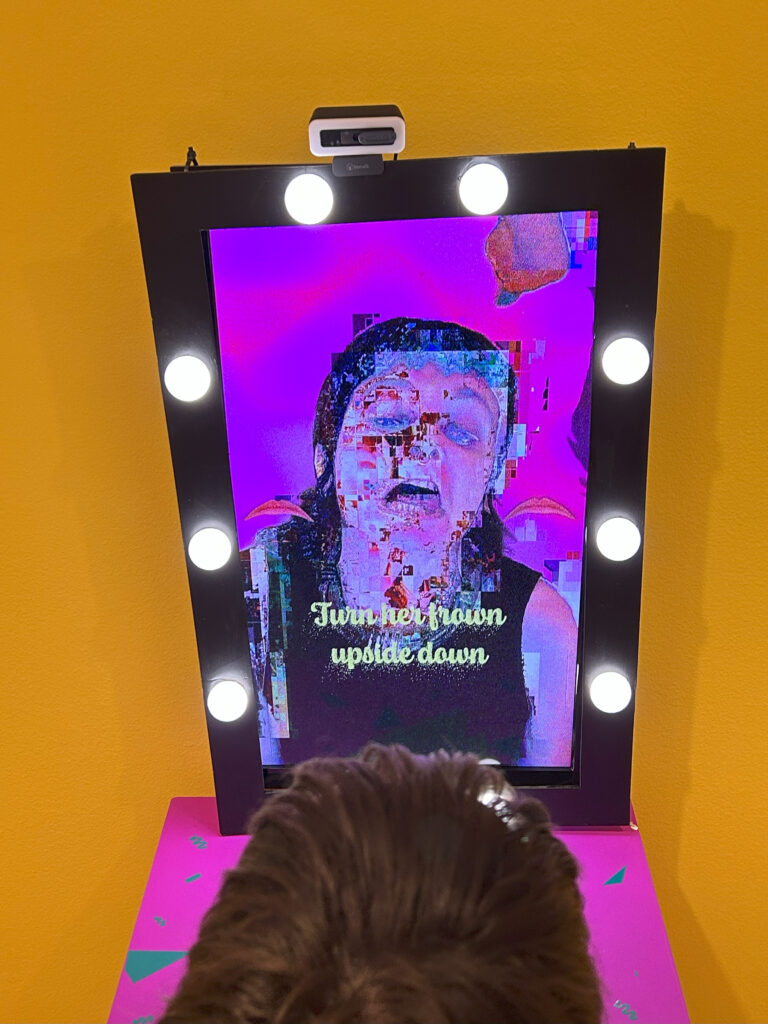
I was invited by curator Kyle Weise to participate in ‘Dice Topologies’ at Redlands Art Gallery, a group exhibition around themes of chance and computation with fellow artists artists, Nicholas Aloisio-Shearer, Charlie Donaldson, Spencer Harvie and Michelle Le Plastrier. The works in Dice Topologies examine the interplay between chance and determination, with an emphasis on the tropes of myth and fantasy in which this interplay is often encased.
I decided to adapt my Smile performance to a sculptural work for the show. This required redesigning the work, as the goals and parameters for interaction and engagement shift when moving from performance to sculptural work. Transferred to a gallery space, the work must be self-sufficient. In the performance arena, I am present and can counter any issues, misunderstandings or hesitance to interact, often responding to these elements within my performance.
As an installation, the work alone must indicate that it can be interacted with as someone walks past. The goal of wanting to hear the performer’s sound without interruption is no longer relevant as there is no performer. I employed the idea of the screen as a mirror, adding a frame and lighting, as people know to look at themselves in a mirror and I hoped this would aid interaction. By enhancing the visual elements and using some game structures, I redefined the work for a gallery setting.
This included:
- Title screen: I created 3d text to display the work’s title – ‘Mirror, Mirror’ while no interaction occurs.
- Activation period: To avoid the work triggering too easily, I set up a recognition period. On first recognition of a person, the person’s outline is displayed on the screen, with text encouraging smiling and an audio sample randomly pulled from my smile sample bank. If the person did not stay in view of the camera and sit down to interact with the work, the interaction would not continue and the original mirror mirror text would show.
- Visual cues: Visual cues would support what was happening sonically. Smiles lined the sides of the screen; the type of smile would change with the participant’s smile, indicating how strong their smile was. The image would glitch with more glitching occurring the less the participant smiles. When they smile fully, there is no glitching of their image.
- Text on Screen: I made the text of the audio sample appear on screen when the sample triggered to visually show the speed increasing the longer there was no smile.
- Reward(?): Once a complete smile is achieved, a relaxing voice starts advocating smiles and positivity. It isn’t easy to stay within the top smile threshold and it resets every time the smile drops below the threshold.
Dice Topologies is on at Redlands Art Gallery, Cleveland
SUNDAY 9 FEBRUARY 2025 – TUESDAY 25 MARCH 2025
Artist/s Talk:
10am, Sunday 23 March 2025
